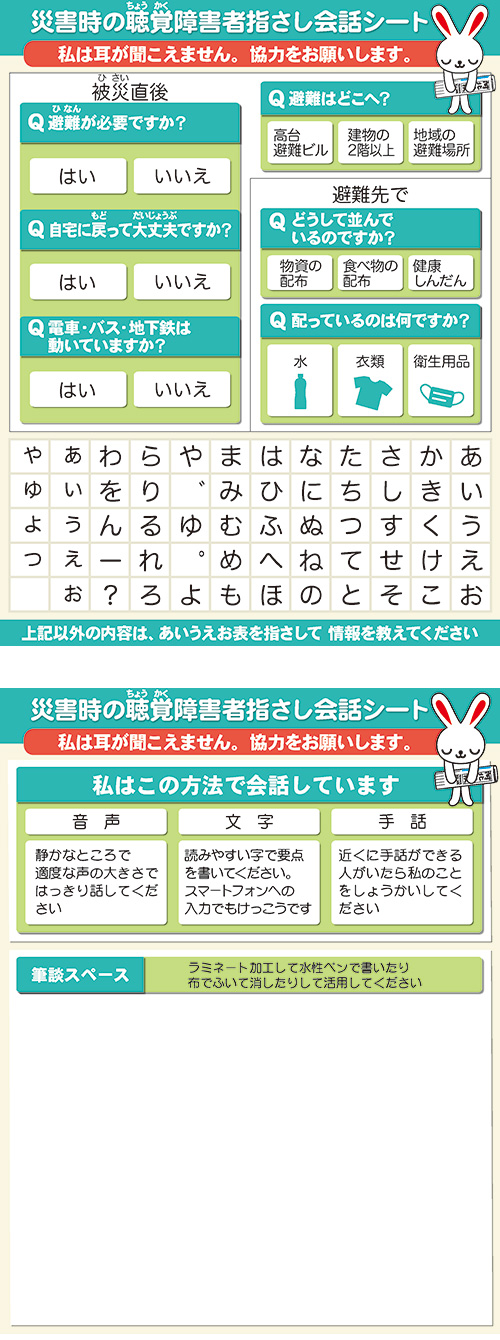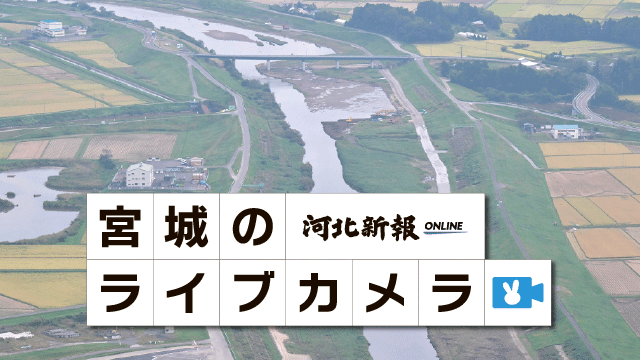Part 3: The Uncertainties of Evacuating by Car (1) Traffic Volume / The "Miraculous Survival” by a H




During the Great East Japan Earthquake, car evacuation produced many victims while saving others. With the low birth rate and aging society of Japan, as well as depopulation and changing ways of living, cars have taken root at the center of the modern lifestyle. But where do they stand in evacuation procedures? After the earthquake, the government changed its stance and approved conditional use of cars during tsunami evacuation. Researchers, the administration, and local communities have begun searching for answers. ("Preserve Lives and Communities" Investigation team)
◎200 meters separate heavy traffic and empty roads
The social welfare corporation Life Care Akaiko, based in Iwanuma City, Miyagi Prefecture, operated a special nursing home for the elderly, “Akaiko Marine Home,” and a day service facility near the sea at Shimonogohama. When the earthquake hit, both facilities held a total of 96 elderly people. Once the shaking settled, they headed toward Sendai Airport, about 1.5 kilometers from the facility.
The staff could not find a radio. Office manager Nobuhiro Suzuki (55) had the wheelchair lift van moved to the entrance, and switched on the car radio.
The ocean was around 300 meters away. The facility was a one-story building, and would be helpless against a tsunami. The radio warned, "The tsunami's height is 10 meters." Suzuki recalled that the levee was only 7.2 meters high. He ordered evacuation to the airport.
Four vehicles such as station wagons were brought near the front door of the facility. Patients gathered in the dining room and halls were transported by wheelchair to the entrance, and loaded onto the cars, one by one. At 2:55 p.m., the first group departed.
Nobuyuki Wagatsuma (30), who drove the lead car, considered the evacuation route. If he heads to the airport using the Sendai Airport Line prefectural road, he would need to take a right turn. The prefectural road has a high volume of traffic. "We can't waste time waiting for the oncoming traffic to pass," he thought, and chose to make a detour.
He was stalled at the bridge. The earthquake had made the ground too uneven for the car to pass. The cars following behind drew near. He prayed he was making the correct decision as he turned the wheel to the left, and took a narrow road along the embankment.
When he entered the airport road from a different bridge, there were almost no cars driving by. This took him completely by surprise. He arrived at the airport terminal building in less than 15 minutes without seeing any oncoming traffic. After dropping off the elderly and asking an airport official to help transport them, he hurried along the deserted road back to the facility.
At that time, a traffic jam had broken out around 200 meters inland from where Wagatsuma drove. Cars attempting to evacuate inland were pouring in from the industrial park spread south of the airport.
Iwanuma City resident Tatsuo Kobayashi (73) was in the midst of returning home from the nursing home where his mother stayed. "Whenever a car in front of me moved forward, another car merged into the lane." He was hardly able to move his vehicle. He entered a housing complex, and relied on his memory to weave through narrow paths back home.
The nursing home staff made three round trips, and finished evacuating a total of 144 elderly and staff at 3:53 p.m. Six minutes later, the tsunami rushed towards the airport building and flooded the entire first floor.
The staff, having evacuated to the third floor, watched the muddy stream with unease. The cars that were in the traffic jam on the airport road are thought to have been swallowed by the tsunami.
When the 2010 Great Chile Earthquake hit Japan, the nursing home evacuated to affiliated facilities inland. The entire process took an hour and a half, so they reviewed their disaster prevention measures and added the airport to their list of evacuation sites. "Facilities such as nursing homes have no choice but to flee by car. I was horrified when I found out later about the traffic congestion,” said Suzuki.
Only 200 meters separated intense overcrowding and desertion on the roads. The “miraculous escape” was made within a hair’s breadth of danger.
◎ Prior planning prevents casualties / Understanding regional characteristics and evacuating on foot
During a disaster, which routes do cars take, and where do traffic congestions form? There is a district that prevented casualties by investigating this in advance.
Sumohama district, Miyako City, does not have a seawall. An eight-meter tsunami swept in after the earthquake, but with the exception of one person who went to check the boats along the shore, all 110 residents were saved.
It is said that almost all people who were home at the time escaped to higher ground on foot. Seizo Torii (73), chairman of the neighborhood association, stressed, "This was the fruit of the evacuation drills we had been holding.”
The neighborhood association has been working since 2005 to improve tsunami countermeasures. With prefectural funding and other support, they established evacuation routes and emergency staircases. They placed guide signs, and created original tsunami evacuation maps. They provided thorough training for evacuation to higher ground on foot.
The city road frequently used by locals was narrow, so it was difficult for large vehicles to pass one another. On the other hand, the road led to the scenic Jodogahama, as well as the seafood processing and cold storage facilities near Miyako Harbor. The residents observed passing cars, and found that there were many tourist vehicles and large automobiles for industrial use during the day.
Under the assumption that tourists and industry workers would likely evacuate by car, the residents considered safe methods of escape. They came to the conclusion that traffic jams were unavoidable, and locals would need to evacuate by walking.
After the earthquake, the government conditionally approved car evacuation while emphasizing on-foot evacuation as a rule, based on a report from the Central Disaster Prevention Council. The disaster had made it clear that vehicles were necessary for evacuating the elderly and physically handicapped, as well as for long-distance travel across flat land.
How could we balance the number of on-foot and car evacuations? Simulations are gathering attention as indicators.
Assistant Professor Jinyoung Kim, Tohoku University International Research Institute for Disaster Science (IRIDeS) (Traffic Engineering), simulated traffic conditions at coastal towns between Sendai City and Ishinomaki City under conditions of the Great East Japan Earthquake.
The premise was that 50% of the daytime population, in addition to vehicles already on the road, would evacuate with three people in each car. She calculated the average time of transportation to 860 evacuation areas using the shortest routes, as well as the extent of damage.
In the simulation, traffic jams sprung up intermittently across the region. A tsunami reaching the shore after 3:30 p.m. would result in 7,146 out of 127,502 vehicles being hit by the tsunami in the coastal areas of Sendai City and Ishinomaki City.
Dr. Kim explains, "The results vary dramatically according to the condition, but we can understand things like which roads would be susceptible to traffic jams, and whether the placement of evacuation areas is effective."
Local governments are beginning to use simulations to investigate evacuation measures. As part of their effort to prepare tsunami evacuation facilities, Sendai City examined the time it takes to complete evacuation under different ratios of cars and on-foot evacuees. Kesennuma City will also utilize simulations to analyze evacuation behavior.
Professor Makoto Okumura of IRIDeS (Transportation Planning) states, "While evacuation by car has technically been approved, traffic jams would occur if everyone drives. It is necessary to think of countermeasures and mitigation plans for car evacuation under different simulated conditions.”
◇ “Wagakoto”
The serialization "Wagakoto" is part of the "Preserve Lives and Communities" campaign. The series revisits the incidents of the Great East Japan Earthquake, in the hopes that thinking about the lessons learned would reduce the number of victims by even one person.
Through “Wagakoto,” we hope to convey the message that disasters are not just "someone else's problem." They should be prepared against as something that could affect you or your family at any time.
As part of this campaign, the traveling workshop "Musubijuku" will be held in disaster-stricken areas as well as western Japan. During the workshop, citizens will have a chance to discuss disaster prevention and mitigation techniques as they are urged to take action.
Translated by Stephen Meyerink
February 25, 2013 (Mon.)
[Japanese] http://www.kahoku.co.jp/special/spe1114/20130225_01.html
 朝刊・夕刊
朝刊・夕刊 記事を探す
記事を探す FAQ
FAQ















